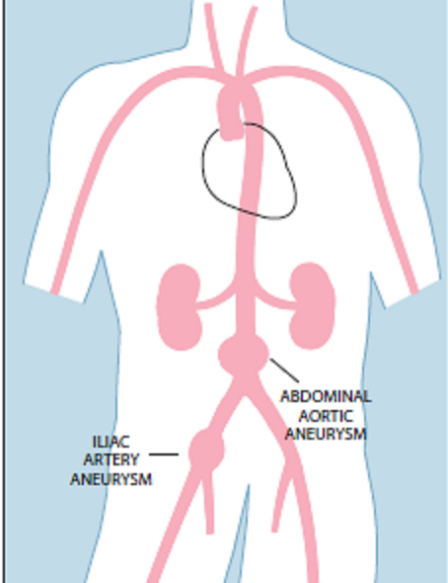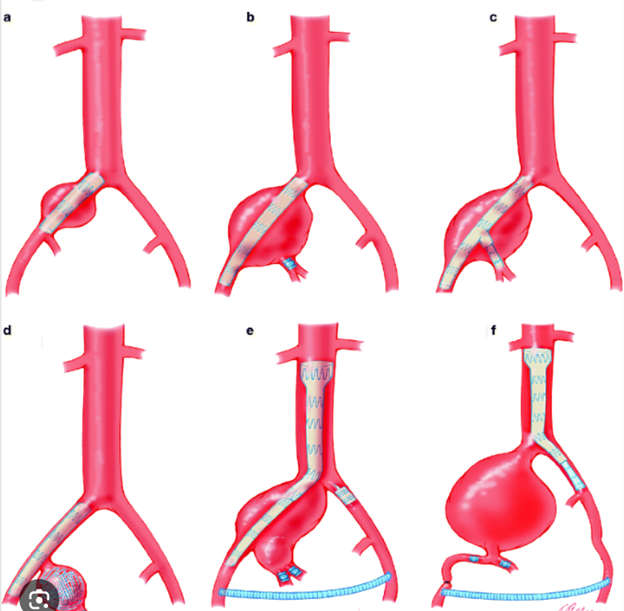What Is an Iliac Aneurysm?
An iliac aneurysm is a bulging or weakened area in one of the iliac arteries—the large blood vessels in the pelvis that branch off from the abdominal aorta. Like other arterial aneurysms, iliac aneurysms often grow silently and may not produce symptoms until they become large or rupture. If untreated, rupture can lead to life-threatening internal bleeding.
Most iliac aneurysms are discovered incidentally during imaging for unrelated issues. Some patients may report vague pelvic, groin, or lower back discomfort, but most remain asymptomatic. At Vascular Clinic, we believe in early detection, structured surveillance, and prompt treatment to prevent rupture and preserve health.
Monitoring Iliac Aneurysms: Surveillance and Progression
Our approach begins with a comprehensive evaluation and continues with longitudinal monitoring. When an iliac aneurysm is detected, we:
- Perform high-resolution imaging such as CT angiography or vascular ultrasound
- Establish a baseline measurement of aneurysm size
Initiate a structured surveillance program that includes:
- Serial imaging studies to track changes over time
- Routine clinic visits to assess symptoms, review imaging, and optimize medical management
Surveillance allows us to identify the rate of growth and determine the right timing for treatment—intervening before complications arise.

When Is Treatment Recommended?
We typically recommend intervention when:
- The aneurysm reaches 3.0–3.5 cm in diameter
- There is evidence of rapid expansion
- The aneurysm begins to cause symptoms or signs of instability
- Additional risk factors increase the likelihood of rupture
- Invasive angiography (in select cases) to visualize and treat in one setting
Minimally Invasive Treatment: Endovascular Iliac Stent Grafting
Whenever anatomically feasible, we perform endovascular repair using a stent graft placed inside the iliac artery through a small groin puncture.
Key Advantages:
- Minimally invasive (no large incisions)
- Performed under local or mild sedation
- Short hospital stay—many patients return home the next day
- Faster recovery and reduced risk of complications compared to open surgery
The stent graft lines the artery from within, excluding the aneurysm from circulation and reducing the risk of rupture.
When Open Surgical Repair Is Needed
In certain complex cases—such as when the aneurysm involves the internal iliac artery or the anatomy doesn’t allow for secure stent placement—we may recommend open surgical repair.
This involves:
- A surgical incision in the abdomen or pelvis
- Direct repair or bypass of the aneurysmal segment using a vascular graft
- Hospital-based recovery with close monitoring
Open repair remains a safe and effective option and is only recommended when endovascular techniques are not appropriate.

Personalized Treatment Planning
Every aneurysm is different. We assess:
- The size, shape, and location of the aneurysm
- Involvement of nearby branches (especially the internal iliac artery)
- Your medical history and surgical risk profile
Based on these factors, we develop an individualized treatment plan tailored to your anatomy and long-term health goals.
What to Expect
Before Treatment:
- Vascular imaging (ultrasound or CT angiography)
- Thorough evaluation during your clinic visit
- Discussion of findings and all treatment options
During the Procedure:
- Endovascular Repair: small puncture access, real-time imaging guidance, stent placement
- Open Repair: direct exposure and grafting of the iliac artery
After the Procedure:
- Most endovascular patients are discharged the next day
- Open surgery patients may require a longer stay
- Follow-up includes regular imaging and clinic visits to ensure durability of repair and monitor for new aneurysmal changes
Frequently Asked Questions
How are iliac aneurysms monitored over time?
We use serial imaging (ultrasound or CT) every 6–12 months based on aneurysm size and growth rate, coupled with regular clinic visits to reassess risk and decide when intervention is appropriate.
When does an iliac aneurysm need treatment?
Generally when it exceeds 3.0–3.5 cm in diameter, is rapidly enlarging, or causes symptoms. We intervene before rupture risk increases.
Can all iliac aneurysms be treated with a stent?
Many can, but not all. If the aneurysm involves a key branch artery or lacks a proper landing zone, open repair may be safer and more durable.
Is recovery easier after endovascular treatment?
Yes. Most patients return home the next day with minimal discomfort and faster recovery compared to open surgery.
Why Choose Vascular Clinic?
- Board-Certified Vascular Surgeons
- Expertise in Complex Aneurysm Repair
- Minimally Invasive First Approach
- Advanced Imaging and Long-Term Surveillance
- Personalized Risk Assessment and Clear Communication
Whether your aneurysm is small and stable or complex and growing, we’re here to guide your care with clarity, compassion, and technical precision.




